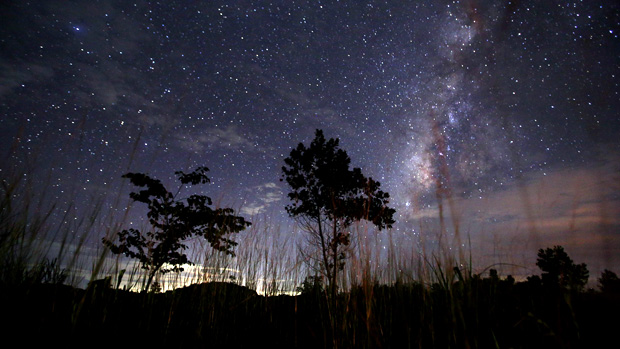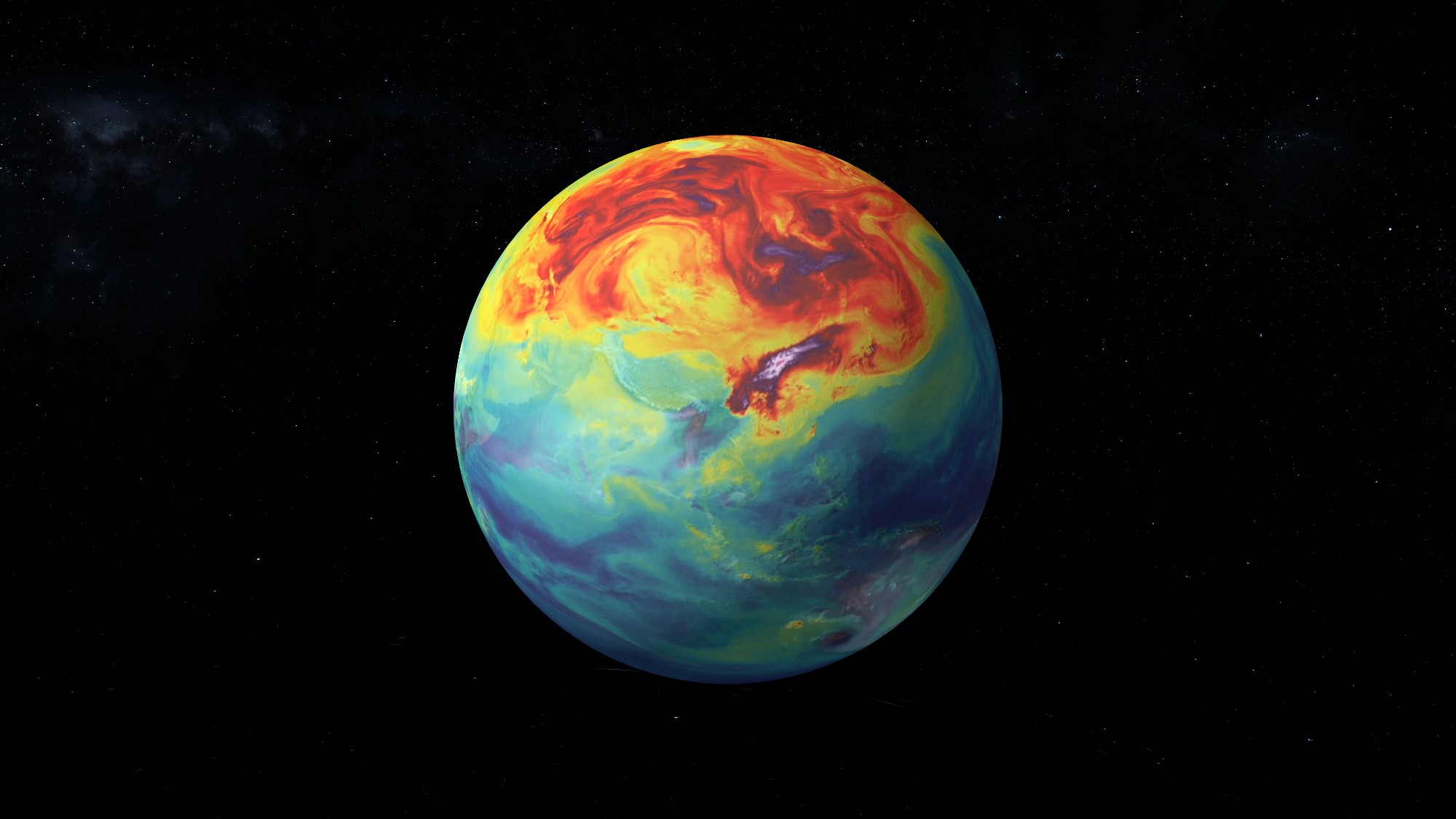Could microbes communicate with alien species?
Experts argue that we should be searching for microbial life rather than human-like aliens

Predrag Slijepcevic of Brunel University London and Nalin Chandra Wickramasinghe of University of Buckingham on whether microbes such as bacteria may be rulers of cosmic life
Are we alone in the universe? The famous Seti (Search for Extraterrestrial Intelligence) programme has been trying to answer this question since 1959. American astronomer Carl Sagan, and many others, believed that other human-like civilisations must exist, and that we could communicate with them. But sceptics are not convinced, arguing the lack of evidence for such civilisations suggests they are exceedingly rare.
But if other human-like civilisations are unlikely to exist, could there exist other forms of life - perhaps better suited than us to spread in the cosmos? And would it be possible for such lifeforms to communicate with each other (non-human Seti)? Our new study, published in Biosystems, suggests it would. Microbes, such as bacteria, may be rulers of the cosmic life - and they are a lot more intelligent than we give them credit for. Indeed, we show how microbes could mimic the Seti programme without human interference.
The Week
Escape your echo chamber. Get the facts behind the news, plus analysis from multiple perspectives.

Sign up for The Week's Free Newsletters
From our morning news briefing to a weekly Good News Newsletter, get the best of The Week delivered directly to your inbox.
From our morning news briefing to a weekly Good News Newsletter, get the best of The Week delivered directly to your inbox.
To understand microbes, we need to challenge our anthropocentric prejudices. While many of us see microbes as single-cell organisms that cause diseases, the reality is different. Microbes are loosely organised multicellular entities. Bacteria, for example, live as member societies of several billion - colonies capable of “thinking” and decision-making.
A typical bacterial colony is a cybernetic entity - a “superbrain” that solves environmental problems. More importantly, all bacterial colonies on Earth are interconnected into a global bacterial supersystem dubbed the bacteriosphere. This “world-wide-web” of genetic information has been regulating the flow of organic elements on Earth over the past three billion years, in a manner that will forever remain beyond human capacities. For example, they cycle important nutrients such as carbon, nitrogen and sulphur.
Even today, bacteria are the most dominant living beings on Earth. Take bacteria out of the biosphere, and life will gradually collapse. Bacteria may therefore be far more suited for cosmic travel and communication than us. A recent study found that terrestrial bacteria can survive in space for at least three years, possibly more. Add to this the fact that bacteria can exist in a dormant state for millions of years, and it’s clear that microbes are very resilient.
Indeed, various versions of the panspermia hypothesis - which states that microbial life exists and travels throughout the universe - support this notion. Recent mathematical models have backed this by showing that microbial travel may be possible not only in our solar system, but throughout the galaxy.
A free daily email with the biggest news stories of the day – and the best features from TheWeek.com
Microbial Seti
How could the microbial Seti work? We believe that the bacteriosphere could potentially replicate all steps known from human Seti. Step one in human Seti is the capacity to read cosmic-scale information. For example, using radio telescopes we can analyse distant habitable planets. Step number two is to develop technologies and knowledge to assess whether habitable planets contain life. Step three is to advertise our presence on Earth to intelligent extraterrestrials and attempt to make a contact with them if they respond to initial signals.
Our version of microbial Seti is shown in the picture below. Microbes have a limited capacity to read the cosmic-scale information. For example, cyanobacteria can read the portion of the electromagnetic spectrum coming from the Sun in the form of visible light (step one). This biological phenomenon is called phototropism and happens, for example, when a plant turn towards or away from the Sun or other light source.

Step two was crucial to the development of life on Earth. Cyanobacteria developed a bio-technology in the form of photosynthesis (which turns water, sunlight, and carbon dioxide into oxygen and nutrients). This transformed the dead planet into a living one, or the bacteriosphere, over a long evolutionary period. Microbial life then got more complex, creating plants and animals in the past 600 million years. Yet bacteria remain the most dominant life form on the planet. Photosynthesis, as a form of bacterial technology, has always fuelled life on Earth.
Step three is all about attraction and communication between microbes with similar chemistries. Extraterrestrial microbes should be able to seamlessly integrate into the Earth’s bacteriosphere if they share carbon-based chemistry and metabolism, including DNA, proteins and other biomolecules. The opposite process is also possible. Microbes from Earth could travel into space on asteroids and seed life elsewhere in the cosmos. Alternatively, humans, as future cosmic travellers, could act as microbial vectors by virtue of the human microbiome.
To appreciate microbial Seti we need to understand the concept of intelligence in the evolutionary sense. This will enable us to evaluate better the bacterial intelligence, and its capacities in the context of human and microbial Seti. Some biologists argue that human intelligence is just a fragment in a wide spectrum of natural intelligence that includes microbes and plants.
We also need to reevaluate technological signatures as signs of intelligent civilisations. Technologically advanced civilisations, according to the physicist Freeman Dyson, must have huge energy demands. These demands may be achieved by building cosmic megastructures, dubbed Dyson spheres, around their planets that can capture the energy from their host star. Searching for such spheres by looking at whether light from stars is blocked could therefore be a way of finding them.
But, if human-like civilisations are indeed rare, there is no point in searching for such structures. Instead, it may be more appropriate to search for biosignatures as signs of microbial life on habitable planets.
The way forward in the search for extraterrestrial life may be to look for gases in atmosheres of planets that signify life, such as oxygen methane or phosphine, which are all produced by microbes. The finding of phosphine in Venus’ atmosphere was a promising lead but it now looks doubtful, as a new study suggest the signal could have been sulfur dioxide rather than phosphine. Yet we have no choice but to keep trying. Luckily, the James Webb Space Telescope should be able to scan the atmosphere of planets orbiting stars other than our Sun when it launches later this year.
Predrag Slijepcevic, senior lecturer in biology, Brunel University London, and Nalin Chandra Wickramasinghe, honorary professor, University of Buckingham
This article is republished from The Conversation under a Creative Commons licence. Read the original article.
-
 A luxury walking tour in Western Australia
A luxury walking tour in Western AustraliaThe Week Recommends Walk through an ‘ancient forest’ and listen to the ‘gentle hushing’ of the upper canopy
-
 What Nick Fuentes and the Groypers want
What Nick Fuentes and the Groypers wantThe Explainer White supremacism has a new face in the US: a clean-cut 27-year-old with a vast social media following
-
 5 highly amusing cartoons about rising health insurance premiums
5 highly amusing cartoons about rising health insurance premiumsCartoon Artists take on the ACA, Christmas road hazards, and more
-
 Blue Origin launches Mars probes in NASA debut
Blue Origin launches Mars probes in NASA debutSpeed Read The New Glenn rocket is carrying small twin spacecraft toward Mars as part of NASA’s Escapade mission
-
 ‘The Big Crunch’: why science is divided over the future of the universe
‘The Big Crunch’: why science is divided over the future of the universeThe Explainer New study upends the prevailing theory about dark matter and says it is weakening
-
 The moon is rusting
The moon is rustingUnder the radar The Earth is likely to blame
-
 Panspermia: the theory that life was sent to Earth by aliens
Panspermia: the theory that life was sent to Earth by aliensUnder The Radar New findings have resurfaced an old, controversial idea
-
 Africa could become the next frontier for space programs
Africa could become the next frontier for space programsThe Explainer China and the US are both working on space applications for Africa
-
 NASA is moving away from tracking climate change
NASA is moving away from tracking climate changeThe Explainer Climate missions could be going dark
-
 Hurricanes are not exclusive to Earth. They can happen in space.
Hurricanes are not exclusive to Earth. They can happen in space.Under the radar These storms may cause navigational problems
-
 Answers to how life on Earth began could be stuck on Mars
Answers to how life on Earth began could be stuck on MarsUnder the Radar Donald Trump plans to scrap Nasa's Mars Sample Return mission – stranding test tubes on the Red Planet and ceding potentially valuable information to China